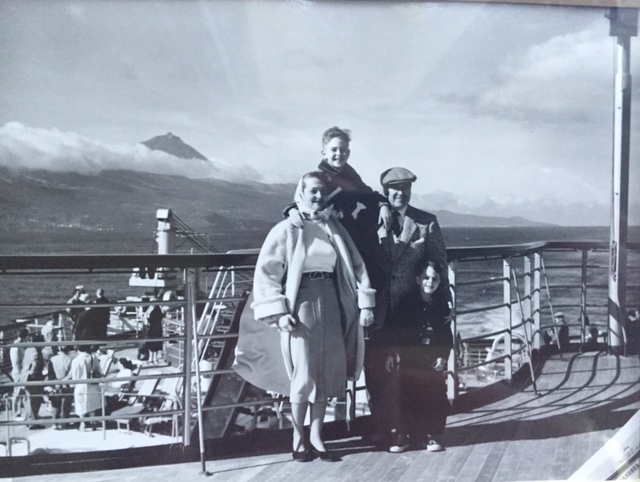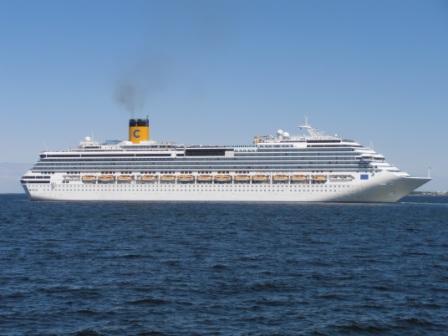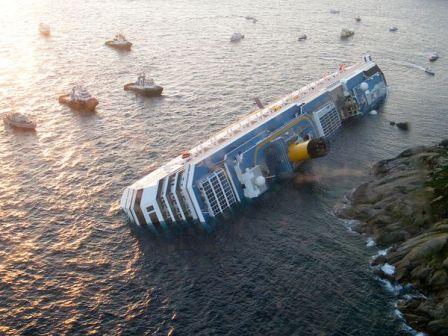By Robert Versteeg, associate of Silvin Books
After Richard René Silvin’s well-attended 2015 presentation about the SS Normandie, the 1930s flagship of the French Line, he will now return to LLS Jupiter on Thursday, February 9, 2017 at 11:15 a.m. This time, Mr. Silvin will take the audience on a journey through time, elaborating on the rise and decline of transatlantic ocean liner travel, culminating with a discussion about cruise ships.

René Silvin on the Andrea Doria two weeks before it sank.
During the heyday of the behemoth ocean liners, there were several famous disasters. The White Star Line’s Titanic
sank in 1912 because of the captain’s recklessness attempting to win the Blue Riband (see my blog of 1/13/2017). The Cunard Line’s Lusitania sank in 1915 because it did not heed the German warning that U-boats would be looking for her. And the Italian flagship Andrea Doria sank in 1956, when it collided with the Stockholm in dense fog off the coast of Nantucket. All three liners were famous ships known for crossing the Atlantic Ocean.
With the advent of jets and skyrocketing fuel costs, transatlantic ocean liner travel shrank to a trickle. The industry changed its focus from high-speed crossings to gentle, low-speed cruising. Luckily, we do not hear about fatal disasters with cruise ships; only the occasional unexpected storm, outbreak of illness or a rogue husband throwing his bride overboard! However, in 2012, an Italian ship became the first large cruise ship to flounder, and both the company which owned her and her country of registry suffered a big blow, when the Costa Concordia sank just off the Tuscan coastline.
The 114,000-ton Costa Concordia entered service in 2006. She could carry 3,780 passengers plus crew and was mostly used to cruise the Mediterranean Sea.
On January 13, 2012, she left the port of Civitavecchia (near Rome) to start a 7-night cruise around the Mediterranean. In what is still a very controversial story, the ship deviated from her planned route, and came too close to the Isola del Giglio. It struck a rock formation on the sea floor, which caused a 174-foot-long gash in the hull.
With 4,252 passengers and crew aboard, the evacuation was handled very poorly, resulting in 32 people losing their lives. Most victims drowned inside the ship, which experts claim should have been avoided.
The investigation into the cause of the disaster focused mostly on 41-year-old Captain Francesco Schettino. The Captain said that he was performing a somewhat routine “sail-past salute” to the island. He claimed that on this fatal day, winds and tides pushed the ship into the rocks.
However, other facts came to light, including the presence of Moldovan dancer, Ms. Domnica Cemortan, a non-paying passenger who was on the bridge at the time of the accident. Ms. Cemortan admitted to having a romantic relationship with the Captain. Some concluded that the Captain made the unauthorized ship maneuver to show off for her. Schettino denies the accusation.
Additionally, others who were present during the disaster said that the Captain got into a lifeboat, while 300 passengers remained trapped aboard the capsized and sinking ship. Schettino claims he “fell” off the ship into the water, and had to climb into a lifeboat. When he was found and severely reprimanded by the Italian Coast Guard in a publicly available interchange, he was not wet…draw your own conclusion.
The ship lay on its side, potentially causing an ecological disaster, for a year and a half. The complicated recovery project cost $623 million, while another $85 million was assigned to repair the coastal area after the ship was hauled off. The ecological cleanup continues to this day. More importantly, 32 innocent people lost their lives, mostly dying terrifying deaths trapped in areas filling up with water. Captain Schettino is serving 16 years in prison for manslaughter.
While some maritime disasters are caused by human error, including occasional poor captaining decisions, the Concordia‘s sinking was unique in its likely gross abuse of power, extreme dereliction of duty and, yes, cowardly behavior. In addition to the tragic loss of life, the incident damaged the relatively unblemished safety record of modern cruise ships, and the travelling public’s confidence in the professionalism of the senior officers.
Please join René as he takes you through 150 years of maritime history. From Necessity, to Glamour, to Recreation: the changing face of Transatlantic Ocean Liner travel.








